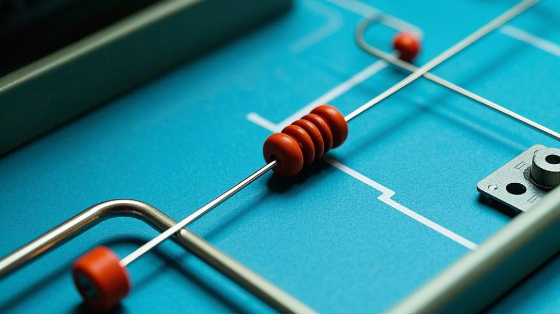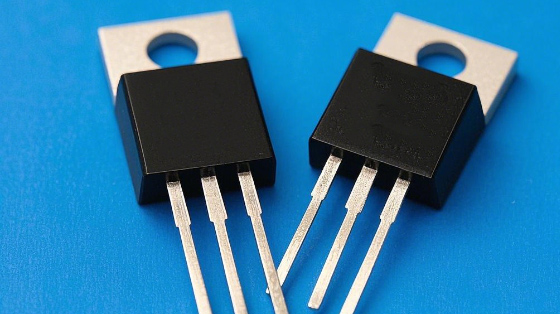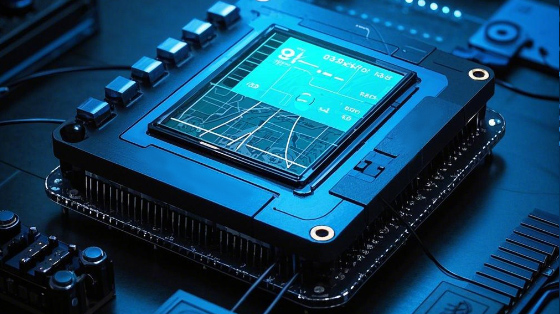The Cornerstone and Power Source of Electronic Circuits
1/15/2025 3:02:06 PM
In the vast world of electronic technology, resistors, capacitors, and magnetic devices are like three solid cornerstones that together build a high-rise building of electronic circuits and provide an indispensable source of power for their stable operation and functional realization. Whether it is simple consumer electronics, complex industrial control systems, or cutting-edge high-tech fields, these basic electronic components are silently playing a key role in promoting the continuous progress and innovation of electronic technology.
Resistor, as one of the most common electronic components, its main function is to hinder the flow of current and play a role in regulating and controlling the current. According to Ohm's law, under the condition of constant voltage, the greater the resistance value, the smaller the current. The types of resistors are rich and diverse, and the common ones are carbon film resistors, metal film resistors, wire wound resistors, etc. Carbon film resistors are widely used in some ordinary circuits that do not require high accuracy due to their low cost and relatively simple manufacturing process. For example, simple toy circuits, limited viewership of lighting circuits, etc. Metal film resistors have become a commonly used type of resistor in electronic equipment due to their excellent stability, low noise, and high accuracy. They play an important role in circuits such as precision measuring instruments and audio amplifiers, and can effectively reduce signal distortion and ensure the accurate operation of the circuit. Wire-wound resistors have a large power bearing capacity and are suitable for applications that require high current, such as current sampling resistors in high-power power supply circuits and motor control circuits.

In practical circuit applications, resistors are widely used. In a voltage divider circuit, by connecting resistors with different resistance values in series, the voltage can be distributed according to a specific ratio, so as to provide the appropriate operating voltage for each component in the circuit. For example, in a multi-range voltmeter, a high voltage is proportionally divided by a voltage divider network, so that the meter head can measure different ranges of voltage values. In a limit viewership of circuit, the resistor is connected in series with the load to limit the current flowing through the load and protect the load components from the impact of large currents. For example, in the driving circuit of the Light Emitting Diode (LED), a limited viewership of resistors is usually connected in series, and the resistor with the appropriate resistance value is selected according to the rated current and power supply voltage of the LED to ensure that the LED works normally and will not be damaged due to excessive current. In addition, the resistor also plays an important role in signal attenuation\ impedance matching. In high-frequency circuits, the parasitic capacitance and inductance of the resistor will affect the circuit performance, so a special high-frequency resistor needs to be selected. Its special structure design can effectively reduce parasitic parameters and ensure the transmission quality of the signal in the high-frequency band.
Capacitors, as a container for storing electric charges, play a crucial role in electronic circuits. They can store electrical energy and release electrical energy at the appropriate time, so as to realize the regulation of voltage, current and signal coupling, filtering and other functions. The basic structure of capacitors is composed of two conductor plates that are close to each other and insulated, and the middle is filled with insulating media. According to different dielectric materials, capacitors can be divided into ceramic capacitors, electrolytic capacitors, tantalum capacitors, and other types. Ceramic capacitors have the characteristics of small size, good high frequency characteristics, and high stability. They are widely used in high-frequency circuits, radio frequency circuits, and circuits that require high capacitor value accuracy, such as radio frequency modules in mobile phones, clock circuits on computer main boards, etc. Electrolytic capacitors are known for their large capacitance value and are usually used in power supply filter circuits to effectively smooth the voltage ripple of the DC power output and provide stable DC voltage for subsequent circuits. Tantalum capacitors combine high capacitance value and good stability, and are often used in circuits with certain requirements for volume and performance, such as portable electronic devices, medical instruments, etc.
In terms of circuit function implementation, the application scenarios of capacitors are extremely rich. In a coupling circuit, capacitors are used to connect two different circuit parts, allowing AC signals to pass smoothly while blocking DC signals, so as to achieve effective transmission of signals between different circuit stages without affecting the DC operating points of the circuits at all levels. For example, in an audio amplifier, through capacitive coupling between stages, the audio signal amplified by the previous stage is transmitted to the next stage for further amplification to ensure the integrity and stability of the audio signal throughout the amplification process. In a filter circuit, capacitors are combined with components such as resistors or inductors to form various filters, such as low-pass filters, high-pass filters, and band-pass filters, which are used to filter out specific frequency components in the circuit. In a power supply circuit, a large-capacity electrolytic capacitor and a ceramic capacitor are connected in parallel to form a filtering network to filter out high-frequency noise and low-frequency ripple in the power supply, improve the purity of the power supply, and ensure the stable operation of electronic equipment. In a resonant circuit, capacitors and inductors are connected in series or in parallel. When the resonant frequency of the circuit matches the frequency of the input signal, a resonant phenomenon occurs. At this time, the circuit exhibits the maximum impedance or the minimum impedance to the frequency signal, which can be used in circuits such as frequency selection and oscillation. For example, a tuning circuit in a radio uses the principle of resonance to select a radio signal of a specific frequency.
Magnetic devices, mainly including inductors\ transformers, etc., are electronic components that work based on the principle of electromagnetic induction, and play a unique role in power conversion\ signal transmission and processing. Inductors are electromagnetic induction components made of insulated wires. When current passes through the inductor, a magnetic field will be generated around it, and changes in the magnetic field will induce electromotive force in the coil, thus hindering the change of current. The main parameters of an inductor include inductance, DC resistance, quality factor, etc. The inductance reflects the ability of the inductor to store magnetic field energy, and its size is related to factors such as the number of coil turns, magnetic permeability, and coil cross-sectional area. Inductors are often used in circuits to filter, store energy, and oscillate. In a power supply filter circuit, an inductor and a capacitor form an LC filter, which has a large impedance to the current of a specific frequency, which can effectively filter out the AC component in the power supply and make the output DC voltage smoother. In a DC-DC converter, the inductor acts as an energy storage component, storing energy when the switch is turned on, releasing energy when the switch is turned off, and realizing voltage boost and buck conversion together with the capacitor to provide suitable power for circuit modules with different voltage requirements. In an oscillation circuit, an inductor and a capacitor form an LC oscillation loop, generating a stable oscillation signal through a positive feedback mechanism, such as in some radio frequency signal generators and clock oscillators.
A transformer is a magnetic device that uses the principle of electromagnetic induction to realize voltage conversion, current conversion and impedance matching. It consists of a primary coil, a secondary coil, and an iron core. When an AC voltage is applied to the primary coil, an alternating magnetic field is generated in the iron core, thereby inducing the corresponding AC voltage in the secondary coil. The voltage ratio of the transformer is equal to the ratio of the number of turns of the primary coil to the number of turns of the secondary coil. By reasonably designing the number of turns ratio, the step-up or step-down function can be realized. In a power system, a transformer is a crucial device used to step up the high-voltage electricity emitted by the power plant to reduce the loss of electric energy during transmission, and then step down when it reaches the user end to meet the power needs of different users. In electronic equipment, such as the output transformer in an audio power amplifier, it is used to achieve impedance matching between the power amplifier circuit and the speaker, so that the speaker can obtain the maximum power output, and at the same time, it can also play the role of isolating the DC/audio signal transmission. In addition, in the switching power supply, the high-frequency transformer is also one of the key components. It converts the input DC voltage into a high-frequency AC voltage under the control of the switch tube, and obtains the required DC output voltage through the adjustment of the turn ratio of the secondary coil and the subsequent rectification filter circuit. It also plays the role of electrical isolation in the energy transfer process, improving the safety and reliability of the power supply.
With the continuous development of electronic technology, resistors, capacitors, and magnetic devices are also continuously innovating and evolving. In the field of materials science, the development of new materials has brought breakthroughs in the performance of these components. For example, in the field of resistance materials, some alloy materials and composites with special properties have been developed, which can achieve higher accuracy, lower temperature coefficients, and smaller sizes. In terms of capacitance, the application of ceramic materials with high dielectric constant and new electrolyte materials allows capacitors to achieve larger capacitance values in a smaller volume, and have better frequency characteristics and temperature stability. For magnetic devices, new types of soft magnetic materials and nanocrystalline materials continue to emerge, which improve the permeability of inductors and transformers, reduce losses, and enable them to operate at higher frequencies, meeting the requirements of modern electronic devices for miniaturization, high frequency, and high efficiency.
In terms of manufacturing processes, advances in micro-nano processing technology have made the size of resistors, capacitors, and magnetic devices continuously smaller and more integrated. For example, resistors and capacitors made of thin film technology can be integrated inside the chip, reducing the area of the circuit board and parasitic parameters between components, improving the performance and reliability of the circuit. Multilayer ceramic capacitors (MLCC) can achieve larger capacitance values at the same volume through multi-layer structure design, and the continuous improvement of its manufacturing process has also improved the voltage resistance value and reliability of capacitors. In the manufacturing of magnetic devices, precision winding technology, lithography, etc. are applied to the fabrication of inductors and transformers, enabling smaller sizes, higher accuracy, and better consistency.
In addition, with the vigorous development of emerging technologies such as the Internet of Things\ artificial intelligence\ 5G communication, new challenges and opportunities are also posed for resistors, capacitors and magnetic devices. In Internet of Things devices, because they usually require low power consumption\ small size\ high reliability electronic components, resistors, capacitors and magnetic devices need to meet these requirements while also having good anti-interference ability to adapt to complex electromagnetic environments. In 5G communication base stations and end point equipment, high-frequency and high-speed signal transmission requires capacitors and magnetic devices with lower parasitic inductance and capacitance and higher self-resonant frequency to ensure signal integrity and efficient transmission. In artificial intelligence chips, the stability and purity of the power supply are extremely high, and capacitors and magnetic devices need to undertake more accurate filtering and energy storage tasks in the power management circuit to provide a strong guarantee for the stable operation of the chip.
Overall, resistors, capacitors, and magnetic devices, as the bedrock and power source of electronic circuits, have always played a pivotal role in the development of electronic technology. Their continuous innovation and progress have laid a solid foundation for the miniaturization, high performance, and multi-functionality of electronic devices, and continue to play an irreplaceable key role in the field of emerging technologies, driving electronic technology towards a more intelligent, efficient, and convenient direction.

Related information
Contact Us
Get more product information!






